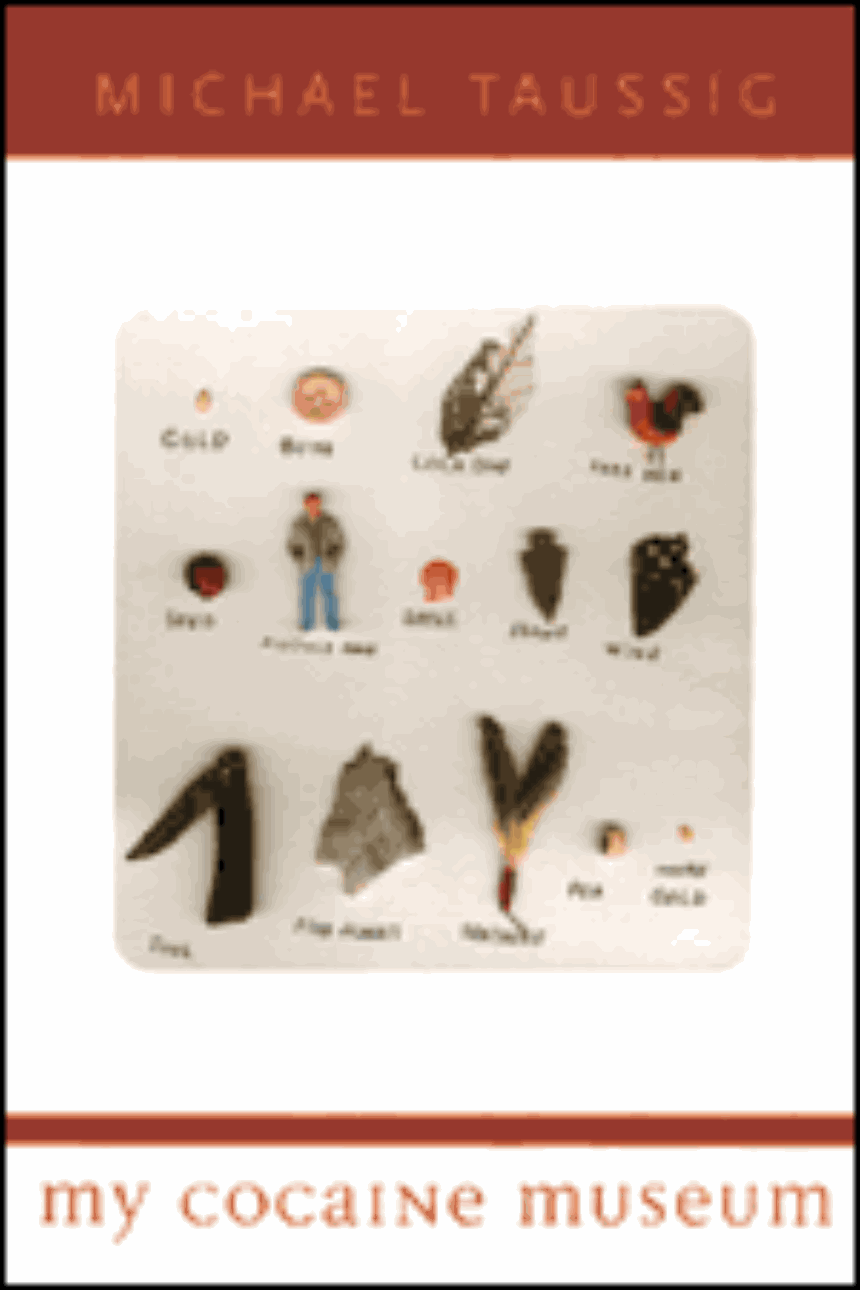My Cocaine Museum
In this book, a make-believe cocaine museum becomes a vantage point from which to assess the lives of Afro-Colombian gold miners drawn into the dangerous world of cocaine production in the rain forest of Colombia’s Pacific Coast. Although modeled on the famous Gold Museum in Colombia’s central bank, the Banco de la República, Taussig’s museum is also a parody aimed at the museum’s failure to acknowledge the African slaves who mined the country’s wealth for almost four hundred years.
Combining natural history with political history in a filmic, montage style, Taussig deploys the show-and-tell modality of a museum to engage with the inner life of heat, rain, stone, and swamp, no less than with the life of gold and cocaine.
This effort to find a poetry of words becoming things is brought to a head by the explosive qualities of those sublime fetishes of evil beauty, gold and cocaine. At its core, Taussig’s museum is about the lure of forbidden things, charged substances that transgress moral codes, the distinctions we use to make sense of the world, and above all the conventional way we write stories.
Combining natural history with political history in a filmic, montage style, Taussig deploys the show-and-tell modality of a museum to engage with the inner life of heat, rain, stone, and swamp, no less than with the life of gold and cocaine.
This effort to find a poetry of words becoming things is brought to a head by the explosive qualities of those sublime fetishes of evil beauty, gold and cocaine. At its core, Taussig’s museum is about the lure of forbidden things, charged substances that transgress moral codes, the distinctions we use to make sense of the world, and above all the conventional way we write stories.
Read an excerpt.
336 pages | 43 halftones, 2 maps | 6 x 9 | © 2004
Anthropology: Cultural and Social Anthropology
Geography: Environmental Geography, Social and Political Geography
History: Latin American History
Reviews
Table of Contents
Contents
Author’s Note: A User’s Guide
Gold
My Cocaine Museum
Color
Heat
Wind & Weather
Rain
Boredom
Diving
Water in Water
Julio Arboleda’s Stone
Mines
Entropy
Moonshine
The Accursed Share
A Dog Growls
The Coast Is No Longer Boring
Paramilitary Lover
Cement & Speed
Miasma
Swamp
The Right to Be Lazy
Beaches
Lightning
Bocanegra
Stone
Evil Eye
Gorgon
Gorgona
Islands
Underwater Mountains
Sloth
Afterword
Acknowledgments
Bibliography
Index
Author’s Note: A User’s Guide
Gold
My Cocaine Museum
Color
Heat
Wind & Weather
Rain
Boredom
Diving
Water in Water
Julio Arboleda’s Stone
Mines
Entropy
Moonshine
The Accursed Share
A Dog Growls
The Coast Is No Longer Boring
Paramilitary Lover
Cement & Speed
Miasma
Swamp
The Right to Be Lazy
Beaches
Lightning
Bocanegra
Stone
Evil Eye
Gorgon
Gorgona
Islands
Underwater Mountains
Sloth
Afterword
Acknowledgments
Bibliography
Index
